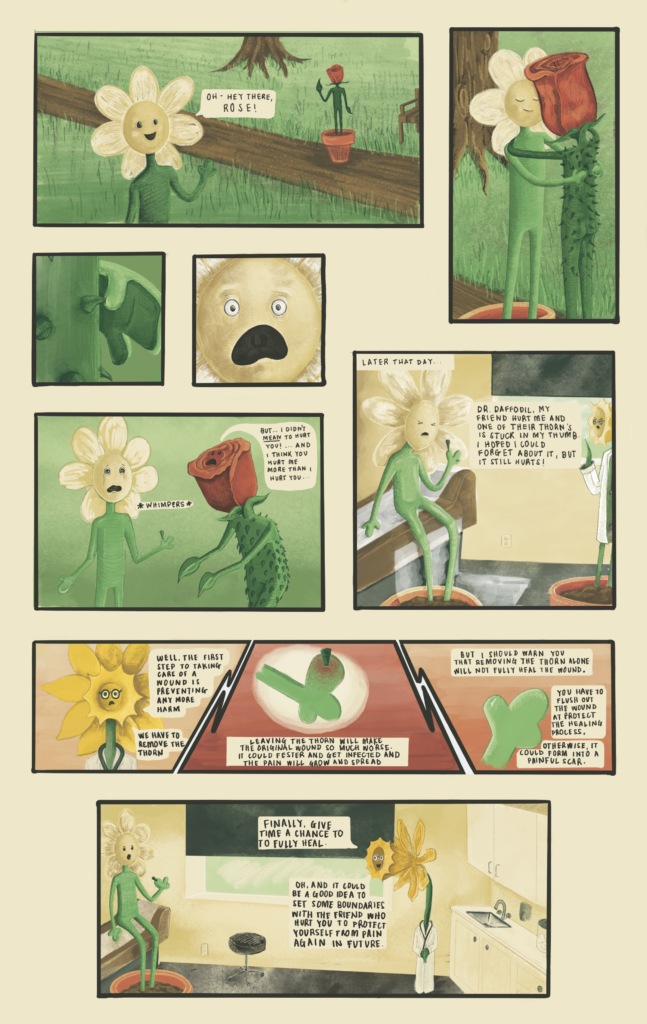24/7 Hotlines: Call or text 988 or text 741741
Post written by Ella Moore

I think that the beauty of human relationships (friendships, romantic relationships, familial relationships, etc…) is that completely different individuals can come together and their unique strengths and weaknesses balance out in a way that they become stronger together than apart. We instinctively crave this since humans are social creatures and this desire for connection and relationships is literally written into our DNA. However, the implicit exchange for intimacy is vulnerability, so the stakes for getting hurt from the relationship than from a stranger are much higher. So what can we do if someone we trusted hurts us, either unintentionally or intentionally? What if this person does not want to resolve the situation or cannot be reasoned with?
I recently ran into this experience where someone else’s mental health triggered my own mental health and it caused the breakdown of a friendship and I got hurt in the crossfire. This situation was incredibly reminiscent of a similar experience of getting hurt by someone close to me in high school, with the fundamental fear and trigger being perceived rejection. Both times I was unable to receive closure or accountability from the other person and this sends me reeling! I hyper-fixate on it for months, even years after it, and during the time I didn’t have as many healthy coping skills at my disposal, I would lash out to make them feel bad for the pain they have caused and to get a reaction. Now I know this is only giving that person what they want, which is to know that they have caused pain and internal/external chaos, I don’t like to give into this urge as easily as I did when I was 16. I wanted to take an active role in processing this so I can move on from it in a healthy way and not let it derail my recovery, but I was at a loss as to how to start to heal from it
At around the same time as the second incident, I coincidentally started seeing a therapist again for the first time in a few years. I lamented to her about the situation and the pain it caused and the way I was still so hung up on it, and she offered her first solution in such simple terms that I felt compelled to share them with you all too.
She compared an emotional wound to a physical one and gave me some basic steps based on this concept to help myself heal from an event or person that caused emotional pain:
1. Assess the seriousness of the “injury”
** If you feel able to address the “injury” by yourself, the following steps can provide a guide for heal from an emotional wound **
2. Remove the thing causing the pain, like the thorn or a splinter, so it can stop doing any more harm.
3. Wash out/clean the wound
4. Bandage / protect the wound
5. Let time start to repair the intensity of the pain
This formula is not guaranteed to provide a complete fix every time, however it does provide the framework to start some healthy healing.
This post was an excerpt from our spring newsletter. For more content like this, check out the newsletter!

© 2024 TurningPointCT.org. All Rights Reserved.